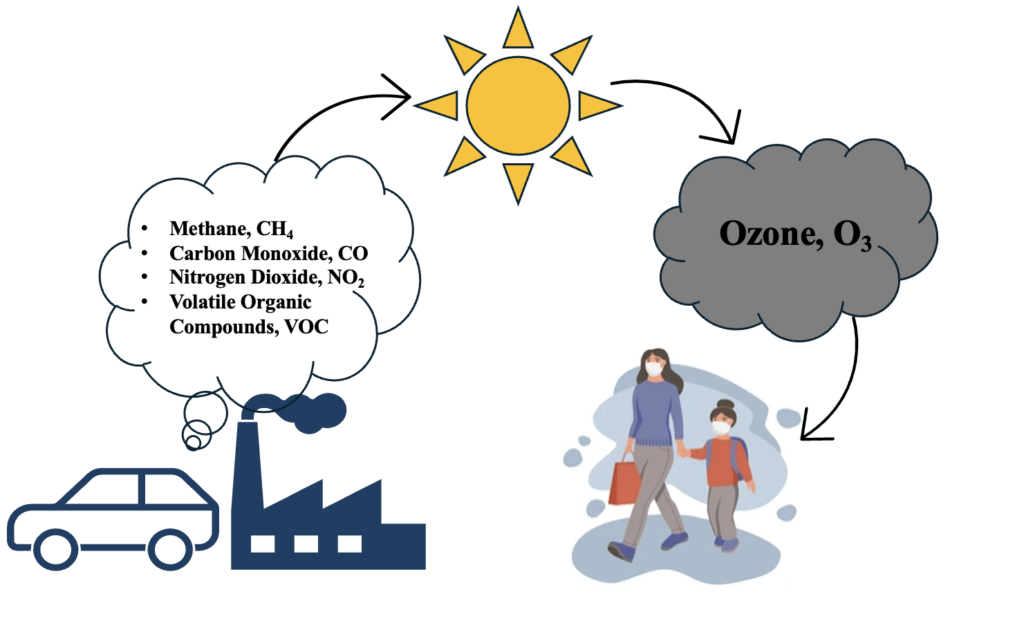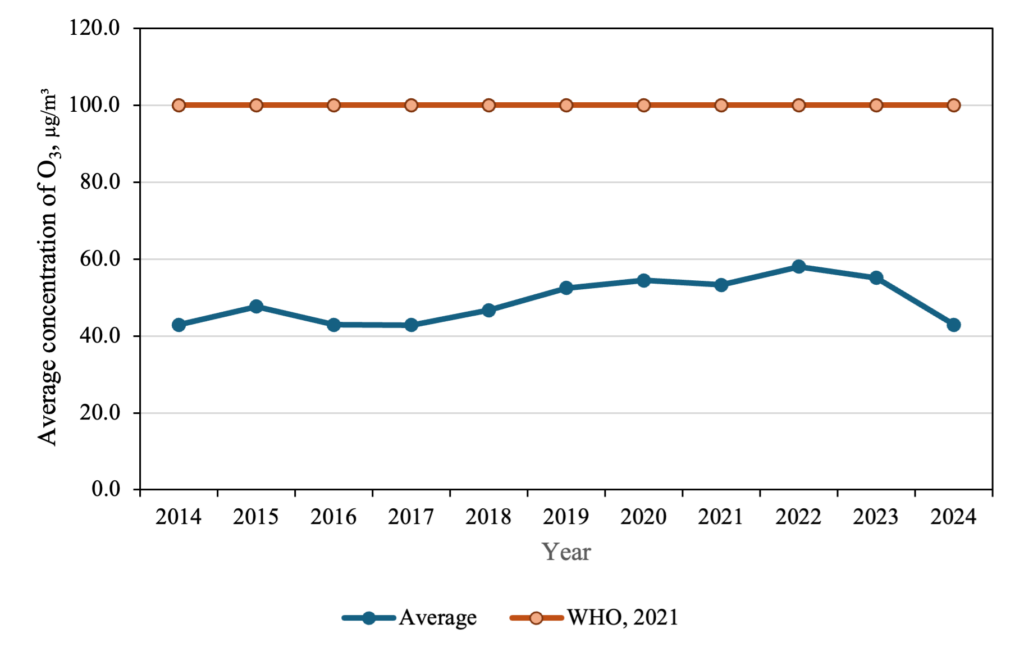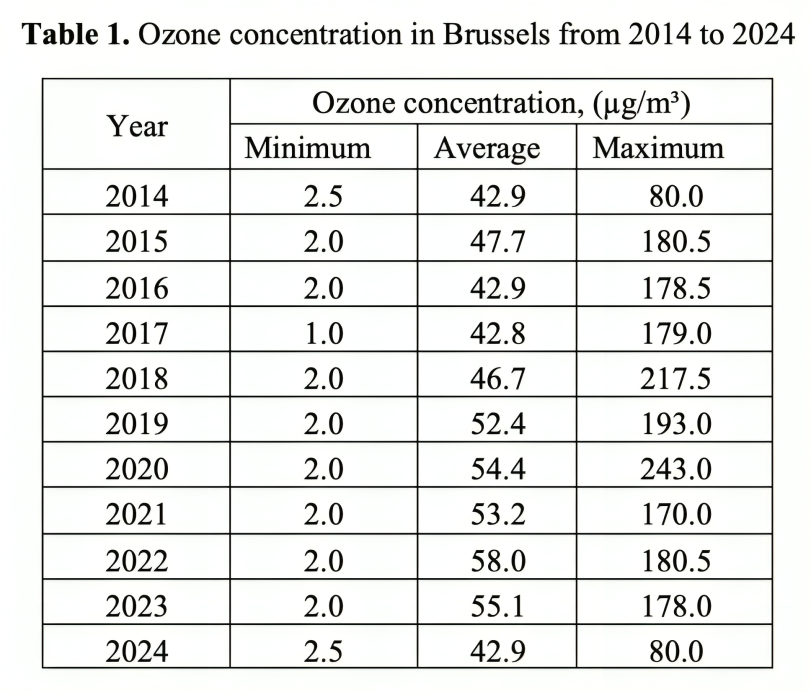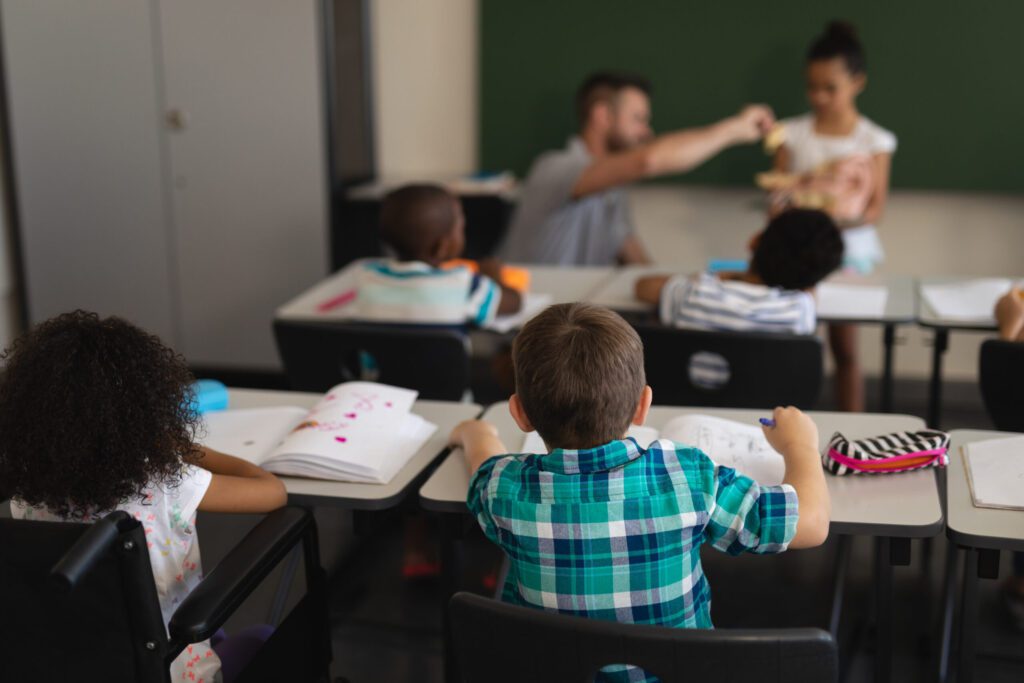Ozone Levels In Brussels For The Last 10 Years

Did you know that the very air we breathe can be both a shield and a hazard? While ozone high up in the atmosphere protects us from the sun’s harmful rays, ground-level ozone can pose serious health risks. Airscan’s latest decade-long study reveals alarming trends in ozone levels across Brussels, with certain summer days seeing concentrations double the WHO’s recommended limit. Dive into our findings to understand how ozone impacts your environment and discover practical tips to protect yourself during high-pollution days.
Analysis Overview

Ozone is a reactive gas with a strong odor resembling chlorine. It can appear pale blue in high concentrations but it is typically invisible due to low levels in the atmosphere. Ozone’s blue hue comes from how it absorbs certain light. In summer, more ozone near the ground can make the sky look slightly hazy. Depending on where it is, ozone can be good or bad.
Good ozone is present naturally in the Earth’s upper atmosphere—10 to 45 km above the Earth’s surface. This natural ozone shields us from the sun’s harmful ultraviolet rays.
Ground-level ozone, known as bad ozone, forms when air pollutants from cars, power plants, and chemical plants react with sunlight. These pollutants, or precursors, are substances that lead to the formation of ozone. This type of pollution is more prevalent during the warmer months due to increased sunshine. Key precursors of ozone include nitrogen oxides (NOx) and volatile organic compounds (VOCs), which primarily result from fossil fuel combustion in transportation, building heating, and the use of solvents in industries and households.
During the summer while temperatures were high, the Airscan team has conducted a comprehensive air quality analysis across various cities and communities in Belgium, including Brussels. Spanning a decade from 2014 to 2024, this study offers crucial insights into the Brussels’s ozone level and underscores the importance of ongoing environmental health monitoring.
The study conducted hourly ozone measurements each year over the decade, using the WHO 2021 thresholds as a reference. These thresholds set allowable concentrations at 60 µg/m³ for peak seasons and a maximum 8-hour limit of 100 µg/m³. The primary aim of the analysis was to observe trends and changes in ozone levels over time, rather than specifically focusing on meeting or exceeding these thresholds. Figure 1 visually represents the annual variations in ozone levels based on this comprehensive decade-long dataset.

However, between 2015 and 2023, there were days when ozone levels surpassed the WHO, 2021 recommended limit of 100 µg/m³. Specifically, in years like 2018 and 2020, these levels were twice as high as this threshold.

As mentioned earlier, ozone levels depend directly on solar activity. Figure 2 shows the yearly frequency of days when ozone concentrations exceeded selected limits, all of which occurred during the summer months from June to August. This period is marked by increased sunshine and higher temperatures, leading to elevated ozone levels.

Concluding Recommendations
Based on data analyzed from 2014 to 2024, the average ozone levels in Brussels do not consistently match the WHO’s 2021 threshold, which is set for an 8-hour period. However, the analysis focuses on observing changes and trends in hourly ozone measurements each year. There are days when levels can nearly double the selected threshold, influenced by climate change and high emissions of ozone precursors such as NOx and VOCs. This highlights the importance of reducing pollution from various sources and educating the public about the significant health effects of air quality.
Nevertheless, by following some practical tips and recommendations, you can minimize the risk of health problems caused by high ozone concentrations:
- Avoid strenuous outdoor activities during peak ozone hours, which are typically in the afternoon and early evening.
- Schedule outdoor exercise for early morning or late evening when ozone levels are lower.
- Refrain from using gas, wood-burning stoves, or candles, as they can increase indoor pollutants.
- Avoid smoking indoors, as it further degrades air quality.
- Regularly clean your home to reduce dust and allergens.
- On days with high ozone levels, use air conditioning or fans instead of opening windows to keep indoor air clean.
Also, it is not possible to draw a common trend between the cities, except for the PM2.5 concentration drops in 2020, which is probably associated with the COVID lockdowns around the country.
Latest Articles

School air quality: protect children today | Airscan
Children are more vulnerable to air pollution at school. Key Brussels data, effective measures (school streets, LEZ), and Airscan solutions: monitoring, smart ventilation, certification‑ready reporting.


Ventilation Audits in Flanders Care Homes: Airscan’s 40‑Site Study on Indoor Air Quality
Airscan’s audit of 40 Flemish care homes uncovered critical ventilation issues: nearly 1 in 4 rooms exceeded safe CO₂ limits. With VEB and VIPA support, the study offers data-driven solutions to protect residents’ health.
